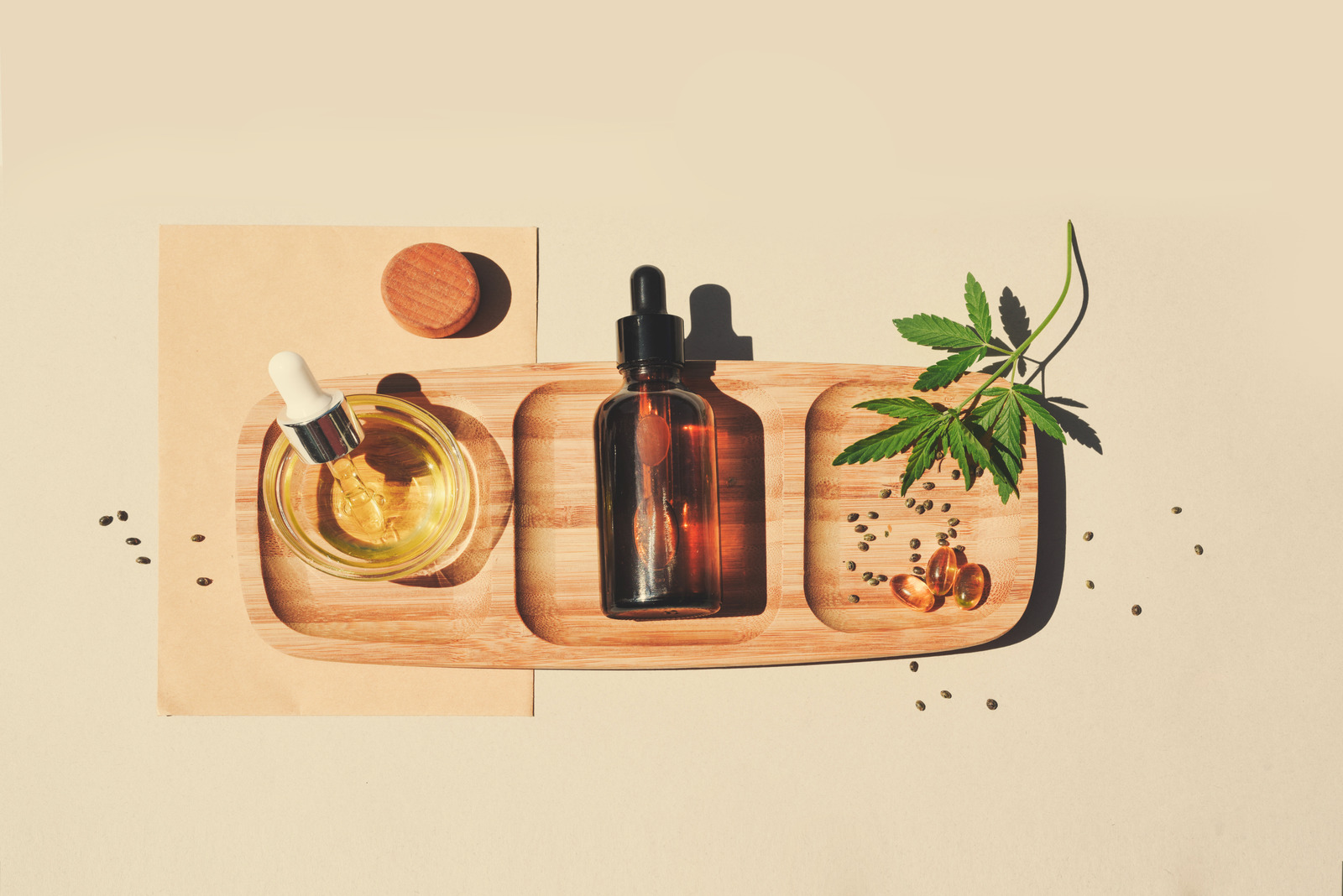CBD Dosage Guide
CBD is popular for its health benefits and non-intoxicating properties, with most products containing less than 0.3% THC. A Forbes Health survey found that 60% of U.S. adults who tried CBD believe in its medicinal benefits. As research on its effectiveness, especially for pain relief, expands, more people are integrating it into daily wellness routines.
CBD comes in various forms, like oils, gummies, vapes, and capsules, but finding the right CBD dosage can be challenging. Here’s a guide to help you find the best CBD dosage safely.

What is CBD?
Cannabidiol (CBD) is a synthetic cannabis plant compound. Unlike THC (tetrahydrocannabinol), it does not induce a “high.” Instead, it is known for its potential therapeutic benefits, which include reducing anxiety, alleviating pain, and improving sleep.
It has been the subject of much discussion and research over the past few years.
A 2017 review shows that CBD is a relatively safe alternative treatment. However, there’s no universal dosage that everyone should take because different people respond to different dosages of the substance. Most human studies use dosages between 20 and 1,500 milligrams (mg) per day.
Different Ways to Consume CBD
| Method | Description | Onset | Duration |
| Sublingual | Placing the CBD oil dosage under the tongue for quick absorption. | 15-30 minutes | 2-4 hours |
| Oral Ingestion | Swallowing capsules, edibles, or beverages infused with CBD. | 30-90 minutes | 4-6 hours |
| Topical Application | Applying creams, lotions, or balms directly to the skin. | 15-30 minutes | 2-4 hours |
| Inhalation | Vaping or smoking CBD flower for rapid effects. | 1-5 minutes | 1-3 hours |
| Transdermal Patches | Patches that release CBD slowly over time through the skin. | 1-2 hours | 8-12 hours |
CBD Concentration & Bioavailability
CBD products come in various concentrations, commonly measured in milligrams (mg). The concentration indicates the amount of the compound per serving. Bioavailability refers to how much CBD is absorbed into your bloodstream. Each delivery method has a different level of effectiveness.
- Vaping. Has the highest bioavailability (40-50%), which makes it the most efficient method. For example, vaping 10 mg of CBD results in 4-5 mg being absorbed.
- Tinctures. Moderate bioavailability (20-30%). More effective than edibles and capsules, but less than vapes.
- Topicals/Patches. Bioavailability of 35-40%. Applied to the skin for localized relief.
- Capsules and Edibles. Lowest bioavailability (5-15%). Least effective, as much of the CBD is lost during digestion.
When switching methods, adjust your dosage based on bioavailability. For example, if you switch from vaping to tinctures, you may need to double your CBD dose to achieve the same effect.
General CBD Dosage Recommendations
Before determining your dosage, check how much CBD is in the product. Lab test reports can confirm the accuracy of these amounts. You can experiment with higher or lower potencies until you find what works best for you.
Taking excessive doses won’t necessarily provide additional benefits and could be wasteful. Yet, not taking CBD enough might result in no noticeable benefits.
Vape Juice
Vaping is one of the most efficient delivery methods. Ensure that your CBD product is designed for vaping, as CBD tinctures are only for oral use. Determining the CBD content per puff can vary depending on your vaping style and the potency of the vape juice.
To calculate:
- Start by knowing the potency listed in mg on the bottle.
- Divide the total mg by the bottle size in mL to find the strength per mL.
- Consider your vape’s liquid capacity. For example, a 30 mL bottle with 1000 mg of CBD contains about 33 mg per mL, and a 1 mL cartridge also contains 33 mg of CBD.
- Adjust accordingly based on your vape tank’s capacity.
Flower and Concentrates
Concentrates are labeled with the total CBD content per gram or as a percentage. For example, a gram of concentrate containing 50% CBD has 500 mg. Using 0.1 g provides approximately 50 mg. Similarly, CBD-rich flower with 20% contains 200 mg per gram. Vaping 0.5 g of this flower yields about 100 mg. Lab test reports can verify these figures.
Oil and Tinctures
CBD oils are taken sublingually and should not be vaped. To find the dosage, divide the total CBD in the bottle by the bottle size in mL. Most bottles include a dropper that measures 1 mL. For instance, a 1000 mg CBD bottle with 30 mL of oil results in approximately 33 mg per mL. Holding the oil under your tongue for 15-30 seconds before swallowing aids absorption.
Capsules, Gummies and Edibles
CBD capsules and edibles pass through the digestive tract, which makes their dosage similar. Packages commonly display the CBD amount per gummy or capsule. If not, divide the total CBD by the number of units in the package. Based on your needs, this helps determine how many times to take them.
Topicals and Patches
Topical CBD delivers localized relief through creams, lotions, and transdermal patches. Patches, conveniently labeled with their total CBD content, normally provide relief for up to 12 hours. Creams and lotions lack a precise measuring system for usage. Combining topicals with another delivery method, such as vapes or tinctures, can enhance results.
Factors Influencing CBD Dosages
- Body Weight. Heavier people may require a higher dose.
- Metabolism. Faster metabolism may process the effects of CBD more quickly, which needs higher doses.
- Severity of Condition. More severe conditions might need higher doses for relief.
- Tolerance Levels. Regular users may develop a tolerance, which requires increased doses over time.
- Bioavailability. The method of consumption affects how much CBD enters the bloodstream.
CBD Dosage Chart
A CBD dosage chart can be a helpful reference for determining appropriate dosages based on various factors. Use this chart as a general guide to determine how much to take based on weight.
| Dosage | 80-150 lbs | 151-240 lbs | 240+ lbs |
| Low Dose | 12 mg | 18 mg | 22.5 mg |
| Medium Dose | 15 mg | 22.5 mg | 30 mg |
| High Dose | 18 mg | 27 mg | 45 mg |
For different conditions, here are the recommended doses:
| Condition | Recommended Dose |
| Increase Appetite (Cancer) | 2.5 mg CBD (1:1 with THC if available) |
| Chronic Pain | 2.5-20 mg |
| Epilepsy | 200-300 mg |
| Sleep Disorders | 40-160 mg |
| Social Anxiety Disorders | 40-300 mg |
Finding the best CBD dosage may involve some trial and error. Always purchase from reputable brands that provide lab testing results.
Your Query on How Much CBD to Take Ends Here
Finding the appropriate CBD dosage requires some experimentation and patience. Start by knowing how much CBD is in products from the GetLoud Cannabis and how much you absorb. Then, experiment to see what works best with your body chemistry and desired results. Always begin with the lowest possible dose and gradually increase. Increase by 1-5 mg increments if needed until you find the optimal amount.
Frequently Asked Questions
Can you develop a dependence on CBD Oil and other related products?
CBD itself is not addictive, unlike THC. It’s considered safe and doesn’t create dependency. However, some CBD products may contain trace amounts of THC, so it’s important to choose products from trusted sources. As with any supplement, individual reactions may vary, so consulting a healthcare professional is advisable.
Does the type of CBD affect dosage?
Yes, the type of CBD you take can affect your dosage. The main types are full-spectrum, broad-spectrum, and isolate.
- Full Spectrum CBD Oil. Contains all cannabinoids, including up to 0.3% THC.
- Broad Spectrum. Contains multiple cannabinoids but no THC, also providing the entourage effect.
- Isolate. Pure CBD with no other cannabinoids.
Full and broad-spectrum may be more effective due to the interaction between cannabinoids. If you are concerned about the THC concentration, broad-spectrum is a good alternative.
Can CBD interact with other medications?
Yes, CBD can interact with other medications. It can affect how your body processes certain drugs, potentially altering their effectiveness or increasing side effects. This is because CBD is metabolized by the liver, which also processes many medications.

